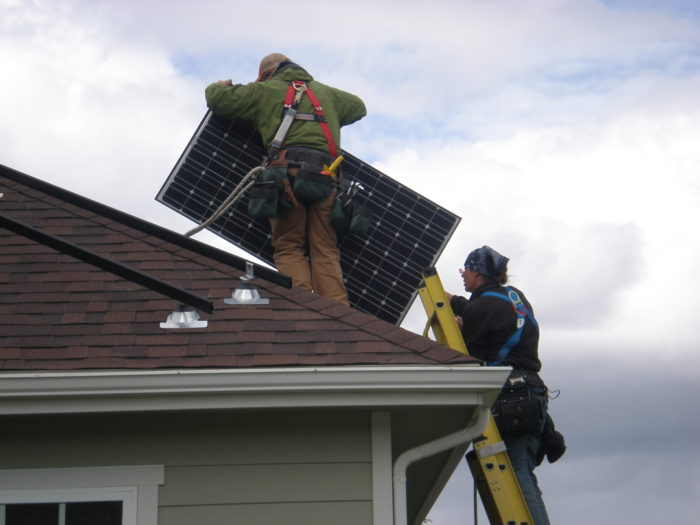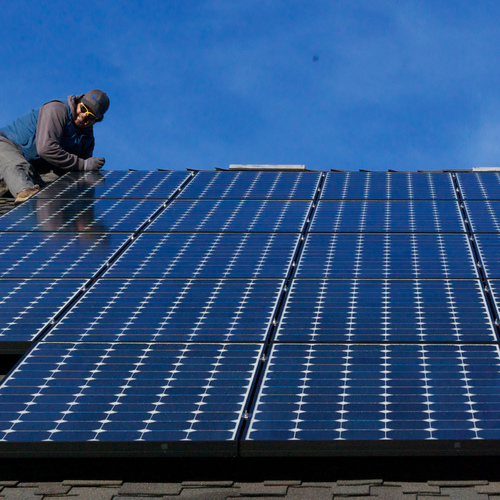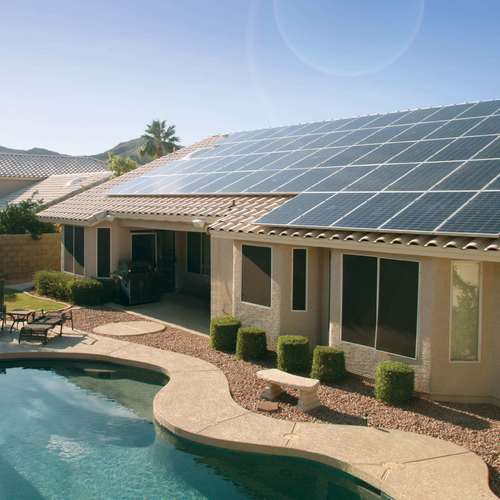
Image Credit: Susan Silo/National Renewable Energy Laboratory
Arizona Public Service had sought an increase in the monthly fee for customers with rooftop solar electric installations of as much as $100, but state regulators have voted to add only $5 to monthly electric bills, the Associated Press reports.
The Arizona Corporation Commission approved the new fee for customers of the state’s largest utility in mid-November after two days of talks and public testimony.
The question of how to treat utility customers who install photovoltaic (PV) systems is proving contentious, not only in Arizona but in a handful of other states, and even abroad. Utilities have complained that as more customers install PV arrays and buy less utility power, the cost of maintaining the utility’s electric grid has to be covered by non-solar customers.
Utilities have sought lower net metering rates, or higher monthly fees to cover the potential shortfall.
Utility far outspent its opponents
In Arizona, the AP said, Arizona Public Service (APS) spent nearly $4 million on ads backing higher fees. The solar industry spent about 10% of that.
There are about 20,000 homes in APS’s service area with PV systems. Overall, the utility serves about 1.1 million homes and businesses.
Bryan Miller, president of the Alliance for Solar Choice, said the decision would allow the solar industry to continue growing. APS spokesman Jim McDonald said the utility was gratified that regulators recognized some fees had to be charged for solar customers, but he said increases weren’t enough.
“It will be exponentially millions of dollars more expensive later than it is now,” McDonald told the AP. He said roughly 500 new rooftop solar installations are added per month in Arizona, “and that will fall on the shoulders of our non-rooftop solar customers.”
Weekly Newsletter
Get building science and energy efficiency advice, plus special offers, in your inbox.















3 Comments
Reverse psychology
As the amount of grid customers decreases, don't you think it would cost less to maintain the grid? The utilities might want to think about doing more with less, rather than focusing on growth.
Conflated costs
If the utilities charged appropriate monthly fees for grid connection, and completely separate fees (rates) for energy use, rather than conflating the two, it seems like this would be much less of an issue.
I'm a solar customer, and I fully recognize that the grid holds value for me, and I'm willing to pay for it. But don't price-gouge me on it, or paint me as a freeloader just because the rates are structured strangely...
We have a grid connection fe in New Brunswick, Canada
I really didn't take much notice of our connection fee until I started to conserve. It was $19.73 a month out of nearly $200. Now it out of $110 a month.
This fee is standard for residential urban/suburban connections. It does not matter what your maximum load is, or when it is.
Coming up with a "fair" system is extremely difficult. It is my feeling that the standard charge for everyone is the most equitable, even though it may not be "fair". I have no PV at the moment, but whatever you produce in New Brunswick, you cannot get rid of that "connection fee".
When we equipped the house with CFL bulbs, I got complaints from my wife about the cost and the quality of the light.
When we found LED bulbs that she liked, there were no complaints at all. I must admit I am happier with the LED bulbs. CFLs were recycled into my daughters house to replace her incandescent lamps.
Everyone gets a benefit. Total wattage of every light in our house is now less than the 300 watts we used to have in the bathroom, with incandescent lights.
Log in or create an account to post a comment.
Sign up Log in